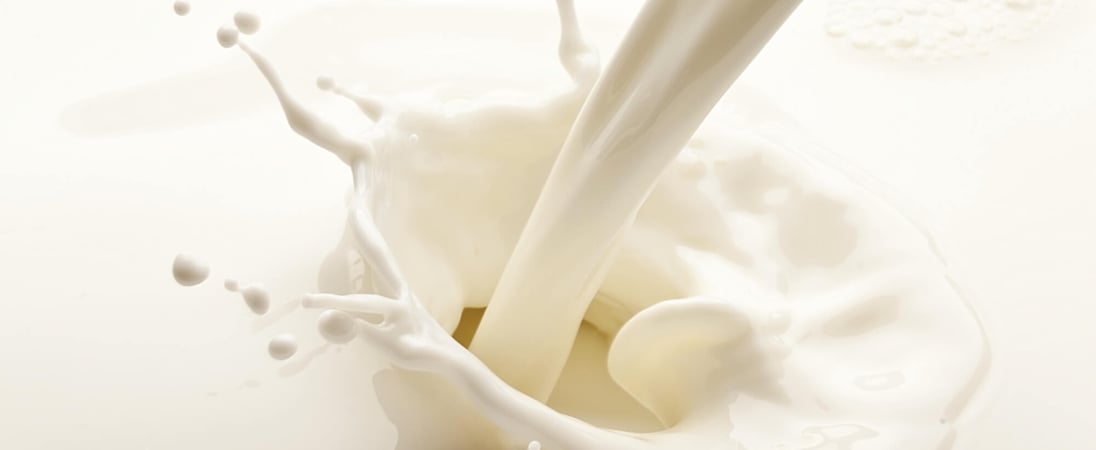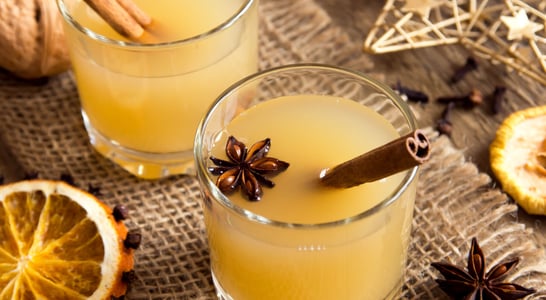
National Milk Day
Whether cow, goat or oat, enjoy this refreshing drink, visit a dairy farm to see how it’s made or whip up some butter and cheese at home.
While drinking a glass of milk might seem like the most natural thing to do, did you know that this small action supports the livelihoods of one-billion people worldwide?
Milk is enjoyed in all kinds of ways by various people who live all over the world! Some people choose to drink it with a meal while others choose to warm it up for a bedtime sleep aid. Any way you like it, 24 hours are dedicated to celebrating this venerable beverage on National Milk Day!
History of National Milk Day
National Milk Day was likely founded to celebrate the first time milk was delivered in glass bottles, beginning in the US.
Some people think it dates back to a time around the year 1915. Prior to this, conditions for milk delivery were fairly unsanitary, but the new bottles enabled safe and clean storage.
However, it didn’t take long until National Milk Day grew to be a day dedicated to all aspects of milk. Whether it is celebrating the health benefits of drinking this nutritious liquid, to the farming industry that produces it, the day can be used to honor and enjoy the wonders of milk.
Now, milk products are stored and brought into homes in many more ways than only in those glass bottles.
No matter how the milk arrives, whether in cardboard cartons or plastic jugs from the grocery store, or still delivered the old-fashioned way in glass bottles on the porch by the milkman, it’s a delicious and nutritious treat for the family.
How to Celebrate National Milk Day
While consumption of milk need not be limited only to National Milk Day, it is a great day to take a moment to consider this beverage of choice that delights and nourishes so many people around the world!
Drink a Glass of Milk
Keep it simple and start out with a tall, cool glass. For an even better treat, tear open a package of cookies and share with a friend!
Encourage School Activities
Many schoolchildren are encouraged to take part in National Milk Day so that they start the good habit of drinking milk from a young age. They can also learn about the various ways milk can be used to create different foods like cheese or yoghurt.
Dairy Farm
Trips to a local dairy are a good place to gain a better understanding about the entire journey of milk, from the dairy cows or goats, to the processing facilities, to the grocery store that sells it. Many local dairy farms are generous with their time and encourage educational visits on this day.
National Milk Day Party
Some people will look for any reason to throw a party, so celebrating National Milk Day is as good as any! Invite people over and ask them to bring their favorite milk-based party food. Cheese plates, cream soups and ice cream are just the beginning!
Dress Up for National Milk Day
If children are involved in the fun, they may enjoy dressing up for the festivities. They can don a pre-made cow costume, or create their own.
Pin cut out black “spots” onto a white t-shirt to create the look of a cow suit. (Hint: a rubber glove blown up like a balloon makes the perfect set of udders when attached to the front of a shirt!)
Make Homemade Cheese or Butter
For a National Milk Day activity, cheese-making is a hobby that can be great fun. Churning butter is another pursuit that can be a learning experience with a milk-based theme.
Enjoy Homemade Ice Cream
Just because National Milk Day may not boast hot weather doesn’t mean that ice cream-making isn’t an appropriate project! It’s easier with an electric ice cream machine but can be done manually as well. Note: lots of ice is required!
Milk Products to Include in National Milk Day Festivities
Celebrating National Milk Day doesn’t have to stop with simply filling a glass full of white liquid and drinking it down! In fact, milk is an important ingredient in a whole host of other dairy products that can make the celebration of National Milk Day into something interesting and extraordinary.
- Cheese Made from milk that is heated, cheese consists of adding cultures and enzymes, then allowing the mixture to ferment to yield a tasty snack. Pungent or tangy, hard or soft, white or blue, cheese is part of almost every culture on earth.
- Ice Cream Mentioned above, ice cream is made from milk (or its heavier friend, cream) that is churned while cold to produce a yummy treat. It’s an especially favorite treat for children in the summertime.
- Butter A tasty option to spread on toast or use in baking, butter is a staple in almost every kitchen.
- Cream Add some to coffee in the morning or whip it up to create a sweet topping for desserts.
- Milk Shakes This delicious treat combines the best of two milk products: milk and ice cream. Blend it up in a blender, add some flavored syrup and tuck in a wide straw to make an easy-peasy glass of yummy goodness. (Of course, adding in fruit or candies increases the delicious taste options!)
Non-Dairy Alternatives
Many people forget that milk doesn’t only come from cows! Goats also offer a significant source of milk, especially for making cheese as well as some body products.
Also, some people tend to avoid milk due to dairy issues. Sometimes milk allergies or lactose intolerance can cause troubles when drinking milk. But those things don’t have to rain on the milk parade!
Just because a person avoids eating dairy doesn’t mean they have to be left out of the festivities of National Milk Day.
Even though cow’s milk is still the most common form of milk (probably about 85% of milk worldwide is sourced from cows), many alternative, non-dairy options of milk are available today, including:
- Almond Milk – a highly preferred milk substitute made from this tree nut
- Oat Milk – made from rolled oats blended with water (you can even make your own at home)
- Coconut Milk – made from the juice that is extracted from inside the soft coconut center
- Soy Milk – made from soybeans that are ground, boiled and strained
- Rice Milk – like soy milk, this is made when the rice grains are ground, boiled and strained
Many of these alternative options can make celebrating National Milk Day fun even for those who struggle to eat dairy for any reason. They can be consumed alone, added to coffee, or used in various recipes just like regular milk.
National Milk Day is a great excuse to do what many people love to do anyway–drink a tall, cool glass of milk. Whether drinking it alone, with a meal, or pairing it with some cookies, a healthy glass of milk will do the body a world of good!
And, of course, if drinking milk results in a milk moustache? Well, then National Milk Day will obviously just be that much better for it!
National Milk Day FAQs
Why do some cultures associate milk with purity and spirituality?
In many cultures, milk symbolizes purity and goodness. For example, in Hindu traditions, milk plays a role in religious rituals, symbolizing life and nurturing qualities.
The cow, a sacred animal in Hinduism, is celebrated partly because of the milk it provides.
In Ancient Egypt, people even believed milk from the sky goddess Hathor nurtured humanity, linking milk to divine care.
What are some fun milk-based festivals around the world?
Spain’s “Milk Festival” in Cantabria includes a lively parade and milk-centric games, celebrating dairy’s importance to the region.
In Switzerland, towns host annual cow parades where farmers showcase cows decked in floral wreaths, celebrating milk’s role in Alpine life.
These festivals not only highlight milk’s nutritional value but also its cultural significance.
Why do different types of milk taste unique across the world?
Milk flavor varies with animal diet, breed, and region. For example, Finnish milk has a distinct taste due to the clover-rich diet of cows.
In parts of India, buffalo milk is popular, boasting a higher fat content and creamier texture than cow’s milk. These unique flavors reflect regional practices and environmental factors.
How did milk become a breakfast staple in the U.S.?
Milk gained popularity in the U.S. breakfast routine in the early 1900s, thanks to the rising influence of nutrition science.
Paired with cereal, milk offered a quick, affordable, and nutritious option. Advertising campaigns also promoted milk as essential for a healthy morning, cementing it as a breakfast classic.
What are some unusual milk-based dishes from around the world?
People get creative with milk! Mongolians enjoy aaruul, a hardened cheese snack, while Tibetans drink po cha, a salty tea with yak milk and butter.
In Sicily, there’s biancomangiare, a sweet almond milk pudding. These dishes highlight milk’s versatility and its unique roles in various cuisines.
Is it true that some people think chocolate milk comes from brown cows?
Surprisingly, yes! In a 2017 U.S. survey, 7% of adults believed chocolate milk comes directly from brown cows.
This myth reflects common misunderstandings about food origins. While it’s a funny misconception, it also highlights the need for more public awareness about where our food comes from.
What are the most unusual types of milk consumed globally?
Beyond cow’s and goat’s milk, people around the world drink camel, donkey, and even reindeer milk.
In Russia, reindeer milk is highly valued for its rich fat content, ideal for harsh winters. In Kenya, camel milk is considered a nutritious staple, especially in arid regions where cattle struggle to survive.
Why did people once believe milk could cure illnesses?
Ancient physicians prescribed milk for various ailments, believing it had healing powers.
Hippocrates, the “Father of Medicine,” recommended milk to treat tuberculosis and fever.
People continued to believe in milk’s health benefits for centuries, and while it isn’t a cure-all, it remains a nutritious drink.
How is Milk Day celebrated in schools?
Schools in many countries celebrate Milk Day by hosting fun activities. Some offer milk tasting stations, where students try different milk flavors, like strawberry and vanilla.
Others host cow-milking demonstrations or educational talks on dairy farming. These activities aim to teach kids about nutrition and agriculture.
What are some environmental myths about milk production?
Some believe that all dairy farming is harmful to the environment, but it’s more complex.
For example, rotational grazing, practiced by some dairy farms, helps improve soil health and biodiversity.
New technologies also help reduce the carbon footprint of milk production, although the industry still faces challenges in balancing production with sustainability goals.
Also on ...
View all holidaysNational Hot Toddy Day
A warm and soothing drink perfect for chilly nights, this classic beverage is a delightful combination of spices, honey, and whiskey.
International Parity at Work Day
No matter their skin color, race, nation of origin, religion, or gender, it is only right and reasonable for people to be paid fairly equally for performing the same jobs for their employers.
Human Trafficking Awareness Day
Addressing a critical concern, awareness initiatives strive to liberate lives and foster a world free from exploitation.




